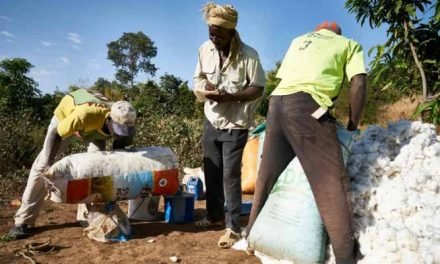
Mayer & Cie. participated in the Simatex trade fair, which held in Buenos Aires at the end of May. Together with its long-standing Argentinian representative Dimatex, the team presented the SF4-3.2 III 3-thread fleece machine. Mayer & Cie. developed this machine mode for elastic, lightweight fabrics. Although the economic figures in Argentina are sobering, the textile machinery fair was able to attract numerous visitors. Six months after Argentine President Javier Milei took office, optimism seems to be setting in in the country, although the restructuring measures mean serious cuts for the time being.
Difficult market situation
The Argentine textile industry has local production over large parts of the textile value chain. These include the primary production of cotton, sheep and camelid fibres as well as the industrial production of yarns, fabrics and garments. Most of the production is destined for the domestic market. Due to the country’s structural difficulties – hyperinflation, escalating debt, currency devaluations, restrictive government measures and trade barriers – consumers have been reluctant in recent years. This led to a recession that has worsened since December 2023. Germany Trade & Invest (GTAI) expects GDP to decline by 2.8 percent in 2024.
The textile industry is suffering from the recession, which has intensified again in the recent past: Nine out of ten companies report declining sales figures, eight out of ten companies have reduced their production. 87 percent of companies are holding back on investments, according to Protejer’s figures, which were presented at Simatex.
Good visitor numbers
Despite these data, Mayer & Cie. and Dimatex were able to record a lively flow of visitors to their stand. The SF4-3.2 III machines on display met with particular interest. She produces lightweight, elastic binding thread lining knitted fabrics in both pure cotton and blends. From a technical point of view, Mayer & Cie. combines components from the MBF 3.2 and the S4-3.2 II for these machines. The result is the reliable stitch formation and excellent plating ability of the machine. The exhibitors demonstrated the latter by means of the black ground thread, which is not visible on the front of the goods. It is precisely this “non-see-through” that proves the high-quality plating properties of the machine – and has the consequence that only a single bath is required when finishing the knitted fabric. This saves resources and costs.
The type of fabrics that the SF4-3.2 III produces has seen increased demand in the global market in recent years, as binding thread lining garments are gaining traction in athleisure, fashion and casual wear.
“We were able to sell our trade fair machine directly to a trade fair visitor, which speaks for the popularity of the machine,” says Horst Maier, Sales Area Manager for Latin America at Mayer & Cie. “We have received project requests for the SF4-3.2 III from other customers.” The D4 4.4, an established, highly productive and popular interlock machine from Mayer & Cie., was also the subject of various discussions.
Positive outlook for the future
Horst Maier has been responsible for the Argentine market for many years and sees no contradiction to the tense market situation in the high number of visitors and the interest in buying: “Our customers have a clear idea of what investments they want to make. However, they are still waiting to see how the situation develops.”
Fernando Ferradas, Managing Director of Mayer & Cie.’s agency Dimatex and an “old hand” in his profession, sees the measures taken by the Milei government as positive – as do around 55 percent of all Argentines. He says: “The road will be rocky, but as the government tries to work on the root causes, there is hope that the economy will recover and gain momentum. In the textile industry, value addition in raw materials and labor plays a major role. Our industry needs the right tools to build an efficient, high-quality industry and compete against external competition.”
GTAI comes to a similar conclusion in its economic data on Argentina: For 2025, the Federal Foreign Trade Agency forecasts economic growth of 5 percent.





















